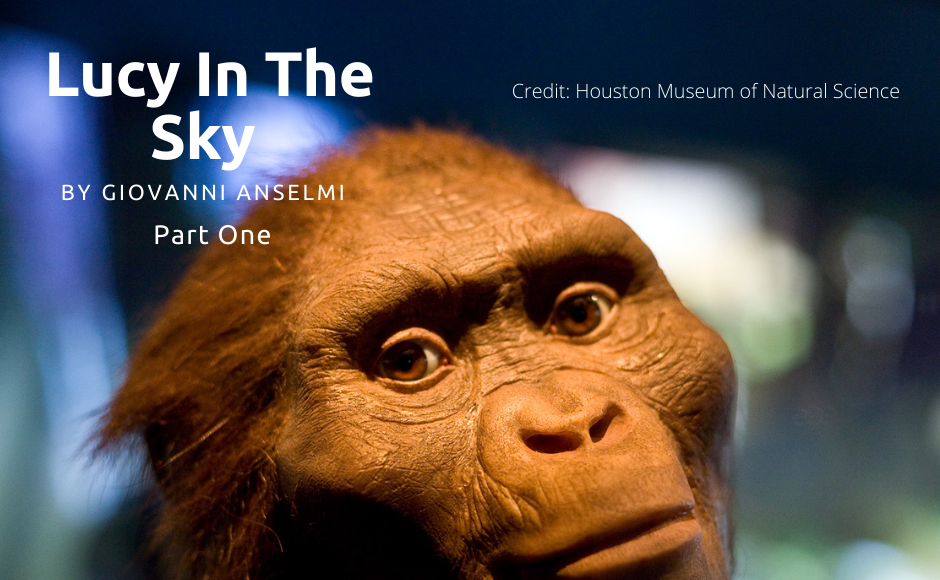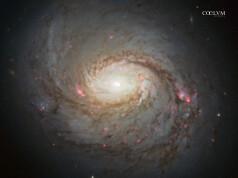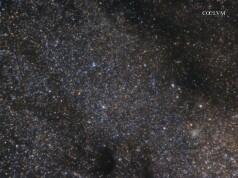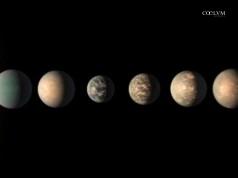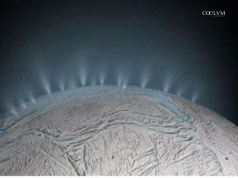Indice dei contenuti
Jupiter is by far the largest and most massive planet in the solar system.
And as befits even the mightiest of gods, it surrounds itself with something of an impressive “court of miracles”, consisting of rings, 79 moons buzzing around it, comets and asteroids frequently sinking into its atmosphere, and… two swarms of asteroids preceding and following it in its orbit… the Trojan asteroids!
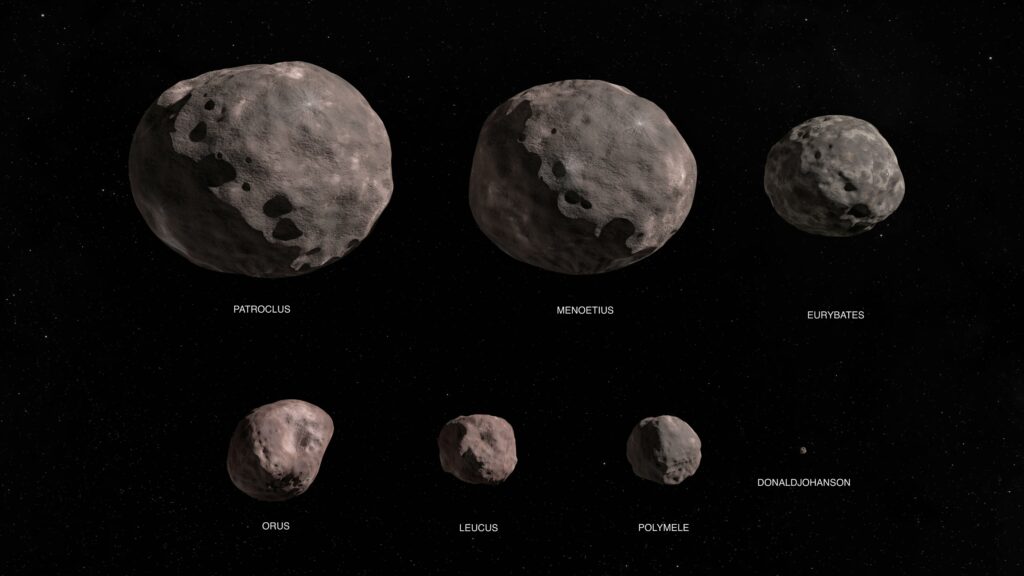
Credit: NASA Goddard Space Flight Center
Despite all that we have discovered about Jupiter, its moons, and even its wafer-thin rings, we know very little about the Trojans. Pioneers 10 and 11, the two Voyagers, Galileo and Juno have all returned a wealth of data on the Jovian system. Until now, however, the only way to study the Trojans has been from afar, with ground-based and Earth-orbiting telescopes.
But all that is about to change. In just a few days, a new Discovery-class robotic mission is scheduled to launch in 2021. The space probe will visit and explore six different Trojans of Jupiter and “in passing” also an asteroid in the main belt.
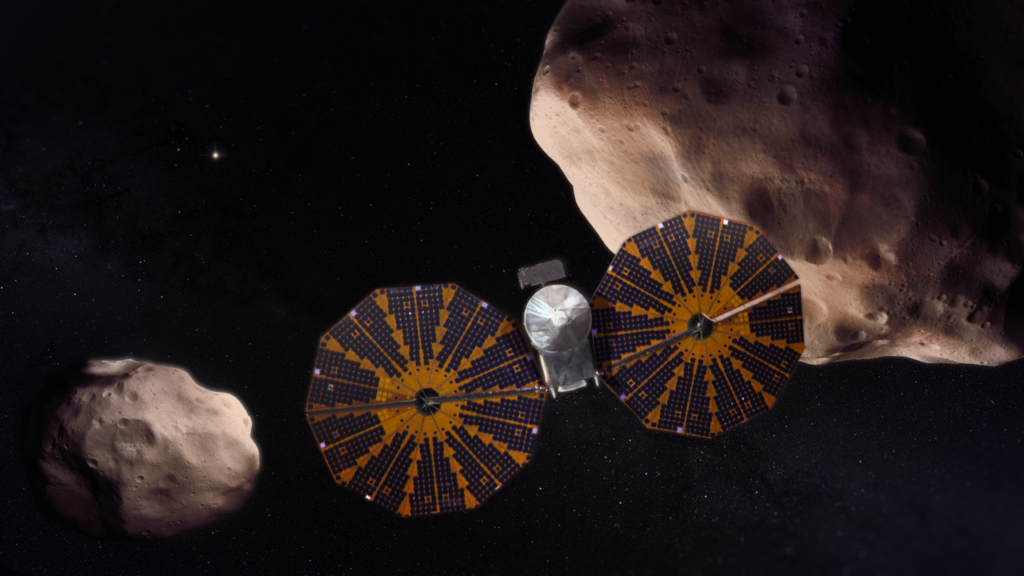
So little is known about the Trojans that the data that the probe will send us will surely revolutionize our understanding of their origin and that of the entire solar system.
We’re used to thinking that the objects that populate our solar system all revolve around the sun, each of them neatly in its own orbit. But there is one class of objects, the “Trojan” asteroids, that prefers to go their own way in good company.
The “Trojans” are small planets that in astronomy are immediately distinguished from all others. In fact, they revolve around the Sun occupying (without disturbing) the orbit of a planet, preceding it or following it along its celestial circuit; with the same period of revolution, but moved on average of an angle of about 60° ahead or behind it. This particular configuration tends to remain stable, in the sense that a slight advance or a slight delay, instead of accumulating over time, are compensated by a dynamic effect that tends to bring the planet “on track”. If this dynamic effect (discovered by Turin mathematician Giuseppe Lagrange in 1772) did not act, sooner or later the Trojan would come close to the planet to the point of receiving a gravitational push that would send it on a different orbit, a fate that sooner or later (over tens or hundreds of thousands of years), touches all asteroids that cross the orbits of the major planets, except for the Trojans.
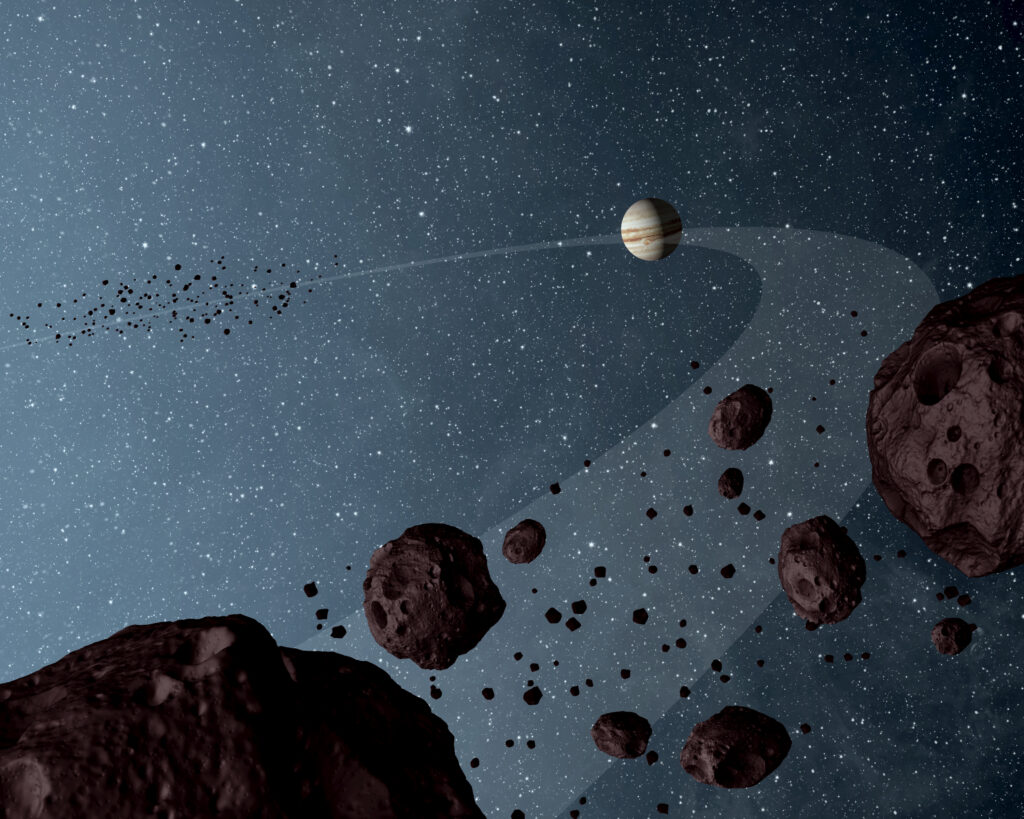
But how long have we been aware of the existence of these unique hitchhikers in the sky?
Well… the German astronomer Max Wolf accidentally discovered the first Trojan – later called Achilles – with the help of the emerging photographic technique. It was February 22, 1906, and Wolf was just exploring the region corresponding to Jupiter’s Lagrangian Point L4. Eight months later, one of his students, August Kopff, discovered a second in L5, and in the following February a third, this time in L4.
Almost all asteroids at that time were given a feminine gender name taken from Roman and Greek mythology, but Austrian astronomer Johann Palisa suggested that all asteroids in Jupiter’s orbit be named after the heroes of the Trojan War. And the first three were in fact named Achilles, Patroclus, and Hector.
However, the number of discoveries was increasing, and to make order it was decided to give to asteroids discovered in the point L4 (the “Greek Field”), the names of Greek heroes, and the names of Trojan heroes to those found in L4 (the “Trojan Field”).
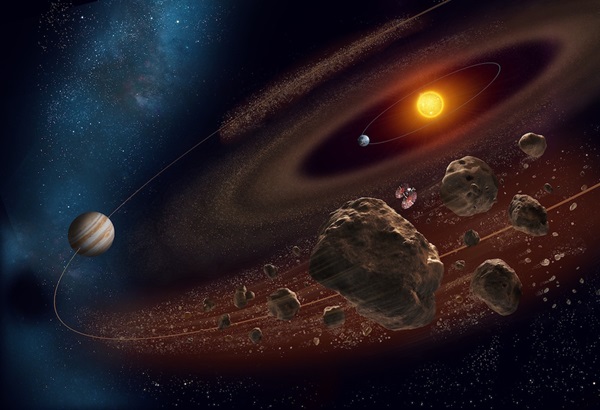
The curious fact is that Patroclus (in L5) and Hektor (in L4) were named before this convention took hold… so that each camp still houses an “enemy spy”… (Patroclus in the Trojan camp and Hektor in the Greek camp).
Meanwhile, the number of discoveries grew, yes, but very slowly. In 1961, more than half a century later, the Trojans amounted to just 14 members.
Then, as instrumentation progressed, the two regions on either side of Jupiter began to crowd together. Slowly at first, and then faster and faster. To date, about 9000 Trojans have been cataloged: two-thirds of the total in the “Greek Field”. A quantity so large as to make it impossible to continue to assign names taken from the Iliad. So the International Astronomical Union (the official Keeper of Space Names) allowed naming them after Olympic athletes.
A decision in our opinion very questionable.
By extension, asteroids that are located at points L4 and L5 of other planets in the Solar System are also called “Trojans”. At present, only for Mars and Neptune, 4 and 6 Trojans are known, respectively. To avoid confusion with those of Jupiter, the adjective Trojans should be followed by the name of the planet. When nothing is specified, it is implied that they are the Trojans of Jupiter.
The origin of the Trojans has always been a very controversial subject, and still is. The hypotheses are diverse. They range from the capture of fragments of a Jovian satellite destroyed by tidal interaction with the planet, to the entrapment of planetesimals orbiting near proto-Jupiter, to the capture of short-period comets.
However, according to the results of recent numerical simulations on the early evolutionary phases of the Solar System, the Trojans would not be bodies captured by Jupiter during its planetary accretion phase, but asteroids from the outer Solar System… captured and then trapped forever in the L4 and L5 Lagrangian points of the Jupiter-Sun system.
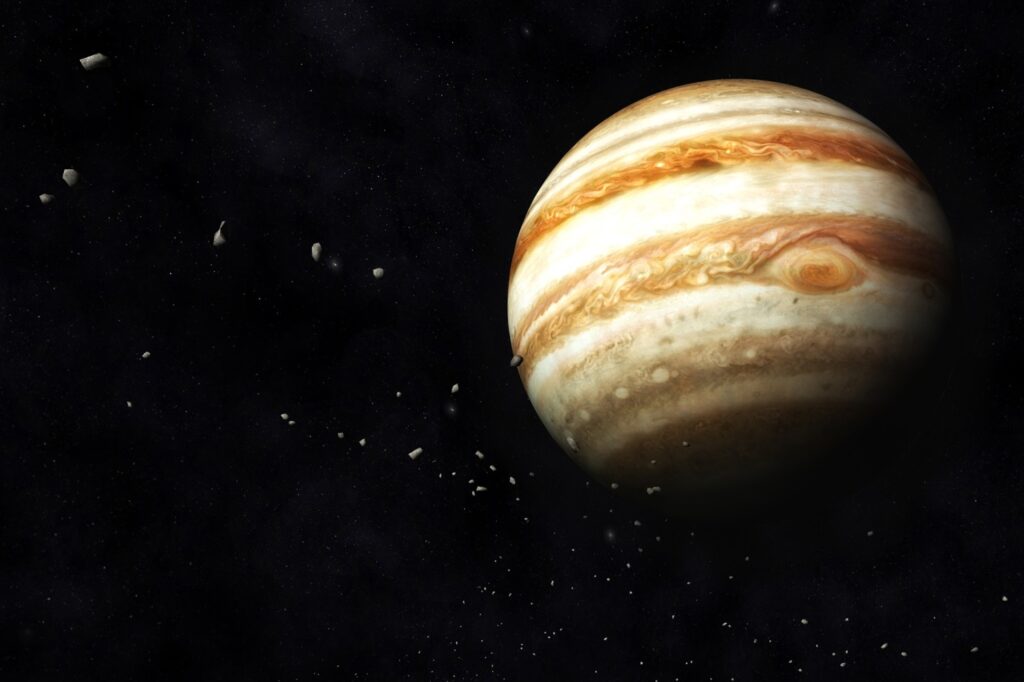
Planet formation and evolution models suggest that the Trojan asteroids are likely remnants of the same primordial material that formed the outer planets, and thus serve as time capsules from the birth of our solar system over 4 billion years ago. These primitive bodies hold vital clues to deciphering the history of our solar system and may even tell us about the origins of organic materials – and even life – on Earth.
That is to say that over billions of years Jupiter has collected and preserved, in two vaults sealed by its gravitational field, thousands of objects that can be considered the fossils of the solar system in formation.
For astronomers, it would be a dream to get their hands on those treasures, and finally, understand how it all began…
And that’s where Lucy comes in.
About 3.2 million years ago, in what is now the Awash River Valley in Ethiopia, a small bipedal creature ceased to live. It is not known how it happened… death took it on the banks of a swamp, probably from exhaustion. Fortunately, no predator touched its remains, so that the body, submerged in mud, earth, and volcanic dust, fossilized over the millennia to become rock. Then, in 1974, a team of paleoanthropologists led by Donald Johanson had the good fortune to bring to light about 40% of its skeleton.
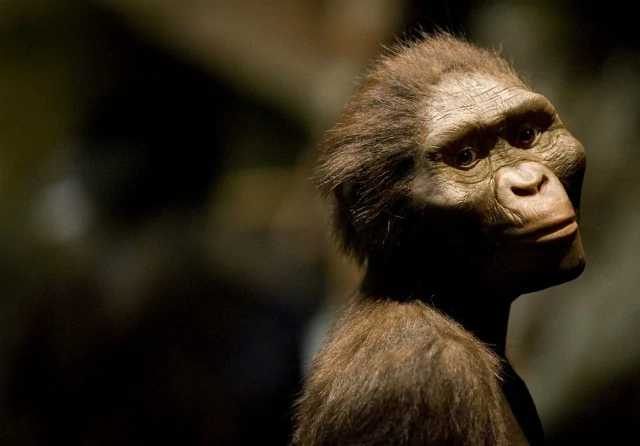
Never had such an ancient bipedal hominid been found, and our distant ancestor was recognized as the first representative of a new hominid species, Australopithecus afarensis, becoming the most famous pre-human fossil in history.
Her scientific name is AL 288-1, but everyone knows her as Lucy. A name that comes from the equally famous Beatles song, , which Johanson’s team was listening to in camp the night of the discovery.
Over the years, Lucy has proven to be a veritable mine of information about the physical constitution of the hominids of that period, helping us to reconstruct the evolutionary history of our species.
And in the same way, a probe bearing her name and about to be launched in these very days will attempt to wrest the secrets of the formation of the solar system from fossils of another kind: the Trojans of Jupiter!




